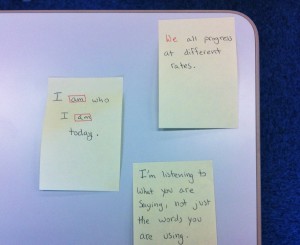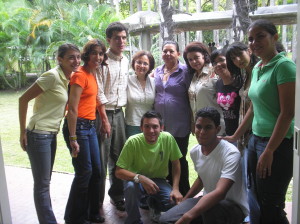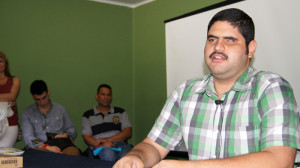A First (?) Day — Tamas Lorincz
I have thought about this day for a long time. I feel my heart beating in my throat; I’m not able to breathe deeply enough. The closed door lies just ahead, and behind it my future. I hear the bell, again and again. I can’t put this off any longer. I have to go through it.
It was a journey for me to get to this stage. My parents insisted I remain with people like me, to make it easier. But I had greater ambitions. My hopes were high with what I wanted to achieve and the people I wanted to inspire. All this to be abruptly halted, one minute after the bell, by two pathetic inches.
People turn to look at me and the first impression I have made is the last I had wanted to.
“Open the other door so he can get through,” they all say to each other, to no one in particular. I wheel myself back a little to give the gathering crowd space.
“I can’t, the latch is stuck,” says another, as I feel myself disappear into the blackness I have occupied so often throughout my life.
Another person tries the latch, then a third, before it finally gives and they are able to open both doors so that my wheelchair can pass.
I haven’t inspired awe, I have attracted pity. The students look at me with a mixture of curiosity, doubt and a bit of fear. They have no idea what to do with me.
When did the word ‘special’ become fraught with so much derision? I am not ‘special.’ I am not ‘unique.’ I do not have special needs and I am not ‘differently abled’. I’m just not able to move my legs.
This…..inconvenience, hindrance, even idiosyncrasy, will mean, inevitably, that I will have to deal with the humiliation of the door, and others like it, everyday.
I remember all too clearly the trauma of my last school, where I had to fake sickness before class performances to avoid being carried down the stairs to the auditorium. Where I had to wait until lunchtime to go to the toilet because the only one fitting a wheelchair was near the basketball courts outside. I could go on, and on and on and on, but it gets boring, as you can imagine.
I wheel myself into the middle of the room. The students clearly have seen nothing like it before. Surely, a teacher isn’t supposed to be in a wheelchair. There’s going to be a lot to get used to.
“I bet you’re wondering how you’re going to get me to sit on a whoopee cushion,” I say to the faces staring at me. I wait for laughter. Slowly, it comes. The students lift their eyes from the ground to look at me, seeking my permission to laugh properly.
“A funny teacher!” says a boy in the back of the class, as if he’s just discovered oil. The rest of the class, fortunately for me, agrees. I have plenty more of these at hand, enough to last a year probably.
So I settle in. I don’t know what the rest of the year holds in store. More laughs, I hope. And maybe some of the students may grow to dislike me, to complain about homework and grades, and realise that I am not so special. Quite normal, actually.
I dedicate this post to every teacher who overcomes their own personal obstacles to bring the joy of learning to classrooms around the world. I wish there were more of you to teach us all. For further insight you might wish to read Dorothy Lepkowska’s November 12th, 2012 article from the Guardian, Where Are The Disabled Teachers?
Connect with Tamas, Chuck, Scott, Vladimira, Nour, Ann and other iTDi Associates, Mentors, and Faculty by joining iTDi Community. Sign Up For A Free iTDi Account to create your profile and get immediate access to our social forums and trial lessons from our English For Teachers and Teacher Development courses.











 6. Ignore general lists of things that should or shouldn’t be done for students. When talking with one another, my students have no such lists in mind. As far as I can tell, they also have no intention of making one, which seems to me to be a very good thing indeed. Watching them support, share, and relate with each other from moment to moment is the best way I’ve found to keep learning what it means to be the kind of teacher I need to be—for them and for myself.
6. Ignore general lists of things that should or shouldn’t be done for students. When talking with one another, my students have no such lists in mind. As far as I can tell, they also have no intention of making one, which seems to me to be a very good thing indeed. Watching them support, share, and relate with each other from moment to moment is the best way I’ve found to keep learning what it means to be the kind of teacher I need to be—for them and for myself.



